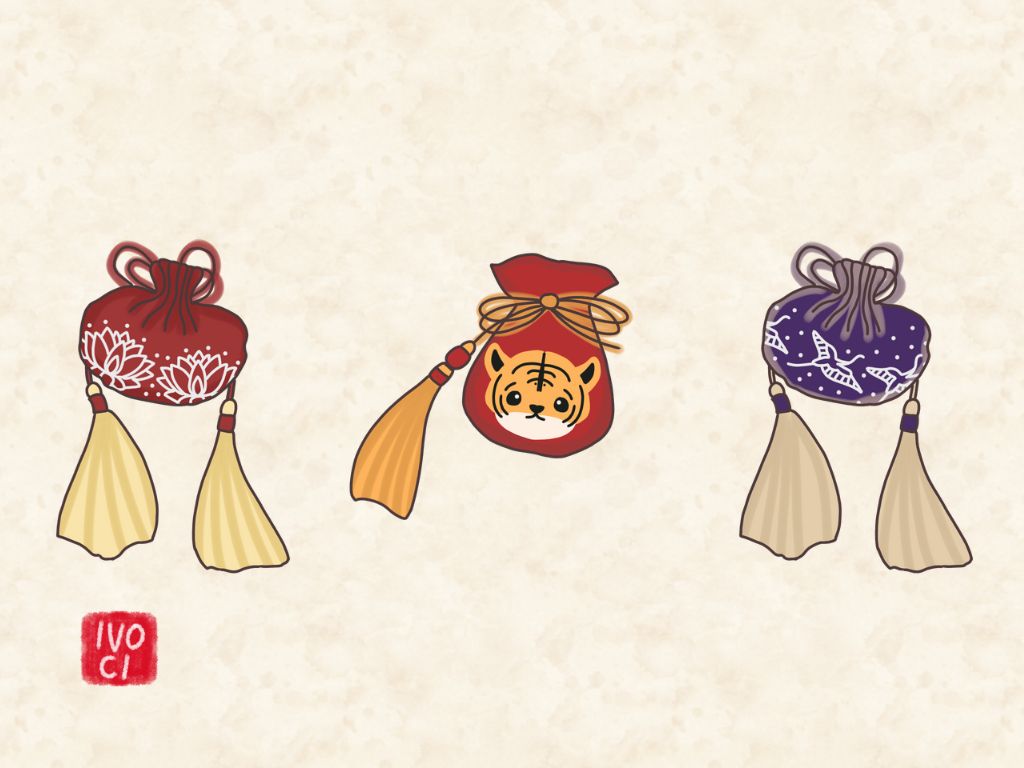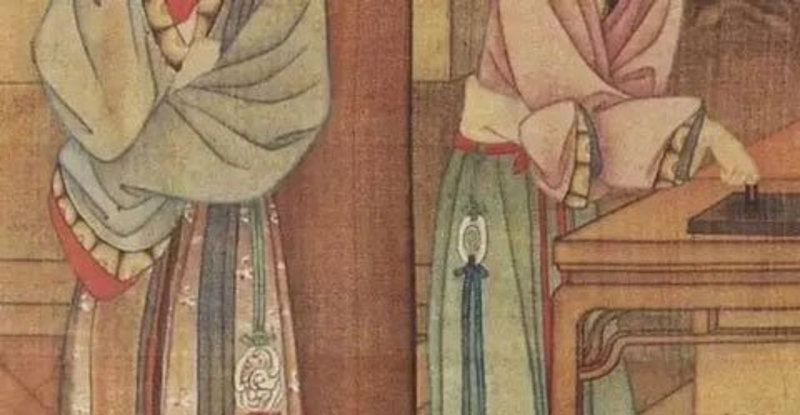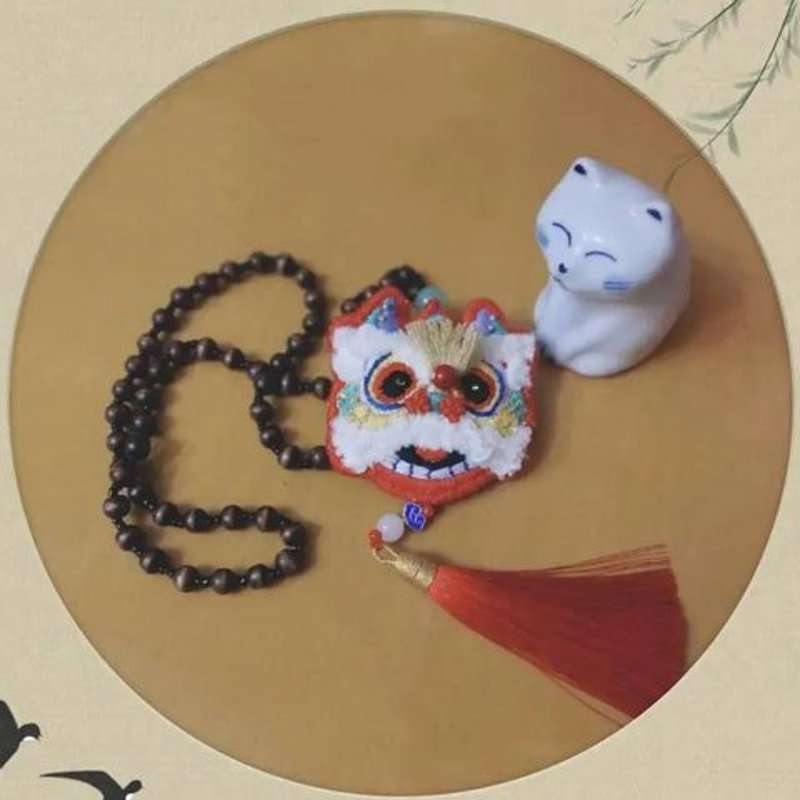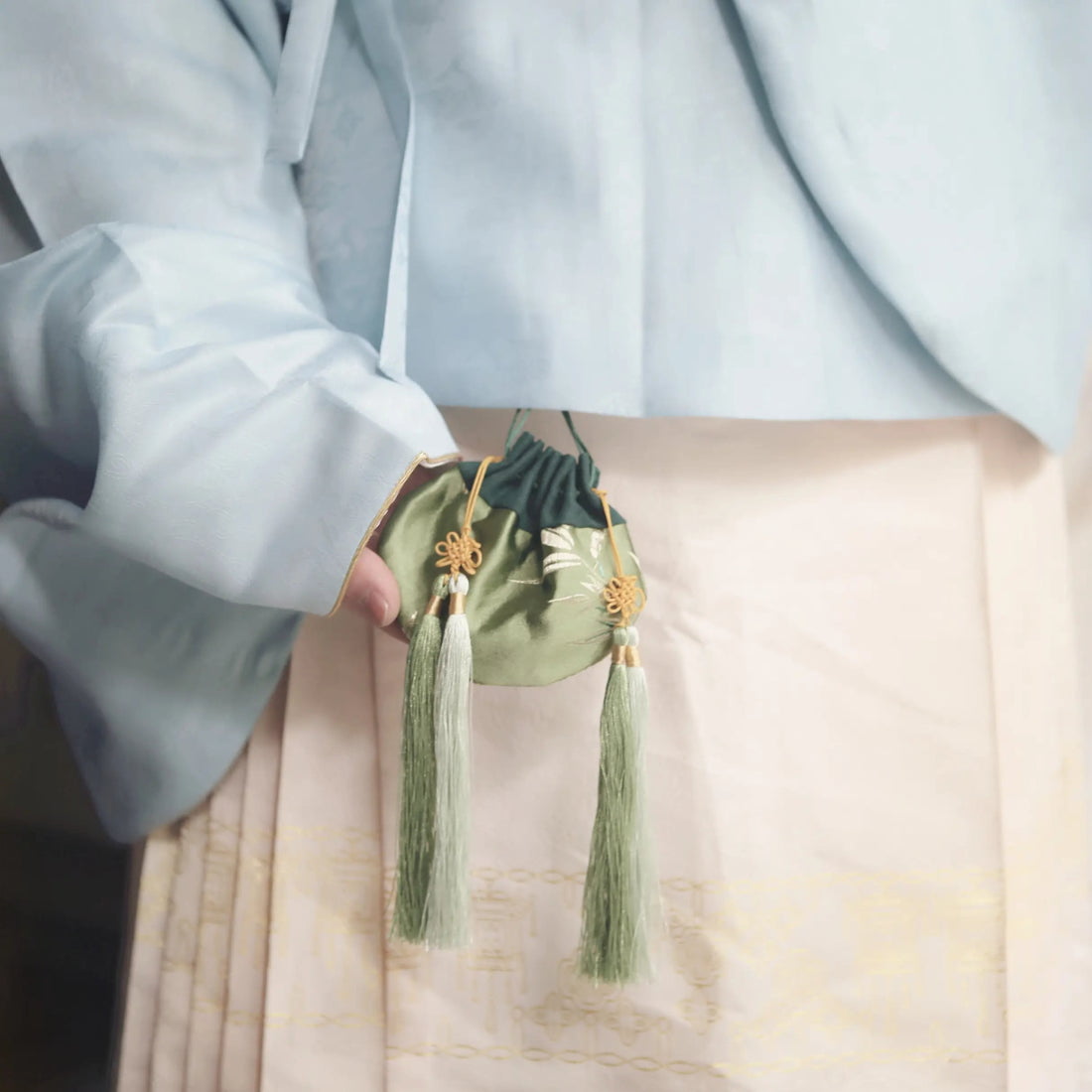Scented sachets or Xiangnang (Chinese: 香囊 ; pinyin: xiāng náng) are folk embroidery crafts made by ancient women.
Xiangnang was originally developed from the Peinang (Chinese: 佩囊 ; pinyin: pèi náng), a small cloth pouch used by the ancients to store small objects.
Because clothes in ancient times didn’t have pockets, so some portable necessities, such as seals, hand towels, coins, etc., would be stored in these pockets, and when they went out, they would put them on their waists, so was called “Peinang”.
Scented sachets can also contain spices for fragrance.
Shang & Zhou dynasties
According to literature, the history of wearing scented sachets can be traced back to the Shang and Zhou dynasties.
According to ritual records, underage men and women at that time had to wear a Rongxiu (Chinese: 容臭 ; pinyin: róng xiù) as a sign of respect to elders, and the Rongxiu mentioned here may have been a form of earliest of the scented sachets.
Spring and Autumn period & Warring States period
During the Spring and Autumn period & Warring States period, the custom of wearing sachets became increasingly popular.
The ancients attached great importance to collecting fragrant flowers and herbs and wearing them on their bodies to make the atmosphere livelier and the people around them feel more comfortable and more fragrant.
In most cases, people dry herbs in beautiful silk bags, use to give off an aroma, but also as decoration.
Han & Wei dynasties
During the Han and Wei (Cao Wei) dynasties, the name “Xiangnang” officially appeared in literature, and there are many records of the use of sachets.
At that time, the sachet was worn under and hidden in the arm, so that the fragrance radiated through the arm.
Tang dynasty
Tang dynasty scented sachets (Xiangnang) are easy to carry and beautiful, and are worn by men and women in high society and hung on carriages.
Song dynasty
During the Song dynasty, scented sachets (Xiangnang) were more diverse. Besides the traditional silk sachets, gold and silver sachets with beautiful ornaments are also made based on the traditional sachets.
Ming & Qing dynasties
During the Ming and Qing dynasties, scented sachets (Xiangnang) were in their heyday and could be carried by both men and women.
In the “Compendium of Materia Medica” (Chinese: 本草纲目 ; pinyin: běn cǎo gāng mù) created by Li Shizhen in the Ming dynasty, there are records of treating ailments with sachets.
Men & Women Wear Xiangnang
However, there is a slight difference between men and women when it comes to the habit of using sachets.
For a male, a sachet is a tool for incense and rituals, most often worn around the waist.
For a woman, a sachet is a necessary accessory in life.
Women are more flexible in using sachets and it is better to use them to show their feminine charm and emotions.
If a woman wears a sachet on her skirt or belt, it is believed that she will look more elegant.
Sometimes, they would hang the sachet on their chest or under their arm according to the style and color of the clothes they wore.
Xiangnang (scented sachets) were also essential items for ancient Chinese women to express their feelings.
When a woman likes a man, she will embroider a sachet and give it as a way to express her feelings.
This is a true reflection of the way women expressed their feelings in ancient times.
This was done because women at that time usually did not express their feelings frankly, and because sachets were personal items, so they became one of the best signs of love.
Pattern
Chinese traditional scented sachets have many kinds of patterns, each pattern has a different meaning.
For example, tigers, leopards, and other wild animals often appear in children’s bags. That’s because parents want their children to grow strong, agile, and healthy, so mothers will embroider agile and strong animals on the sachet and then fill it with herbs to strengthen the body to pray for the welfare of their children.
The greatest blessing to parents is longevity, so scented sachets for aged parents were embroidered with motifs of pine and cypress or cranes.
Newly married couples or married women usually wear scented sachets with plum, peach, and lotus flower patterns, as a wish for a happy marriage and as a good wish for the woman.
Style
With the development of silk and embroidered fabrics, not only the variety of designs and patterns, but also the variety of textures, from real brocade materials originating from gold silk, silver silk, and others, continues to grow.
The most special is the Tang dynasty filigree scented sachet.
Not only because of its unique and beautiful shape but also because of the special manufacturing process. These sachets are different from ordinary silk sachets.
Over thousands of years of history, the traditional Chinese scented sachet culture has developed from the simple way of carrying objects to the sachet culture with Chinese characteristics.
Although now due to the advent and use of aromatherapy, perfume, and other items, Xiangnang (scented sachets) are rarely used except at certain festivals and occasions but have left a strong mark in the history of incense and sachet used in China.





Leave a Reply